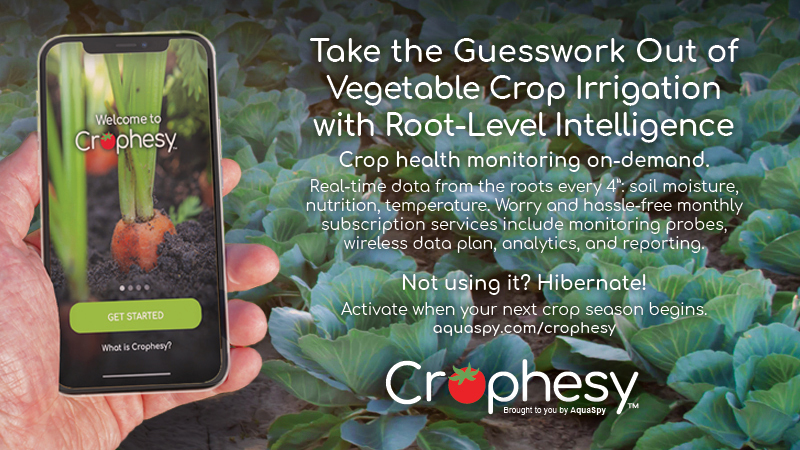Opinion: Let’s Turn The Tide on Water Quality
From Tallahassee to Orlando to West Palm Beach, concerned citizens were slated to show up in droves at the EPA hearings last month on Florida water quality standards. The hearings came in the wake of EPA’s decision to settle an activist-filed lawsuit over enforcement of the federal Clean Water Act in Florida. As this article goes to press, the hearings haven’t occurred. My hope is that agriculture’s message came through loud and clear in the tsunami of public comment: Water is agriculture’s lifeblood. We won’t survive if standards are unrealistic — set so high as to be economically or technologically unattainable.
At the heart of the controversy is EPA’s decision to settle the lawsuit with a promise to adopt numeric nutrient criteria for Florida waters. This EPA action derailed a decade-long, data-intensive, stakeholder-inclusive, multimillion-dollar effort by the Florida Department of Environmental Protection to adopt Total Maximum Daily Loads (TMDL) for the state’s water bodies.
Just The Facts
Florida has been the national leader in developing water quality standards through its TMDL program and is at the head of the class in reuse of domestic wastewater. Other hard-to-deny facts include:
• Florida has the most comprehensive Best Management Practices (BMPs) agricultural programs in the nation.
• Seagrass populations are showing increases in the Tampa Bay and Charlotte Harbor estuaries and nutrient levels have declined since the 1980s.
• Florida has the most extensive network of water quality monitoring.
My hope is EPA will consider the possible unintended consequences of its action:
• $50 to $90 billion to comply with for wastewater treatment plant upgrades (estimated to add $720 per year to every sewer bill)
• Florida is being singled out and our economy is getting hammered at a time when unemployment exceeds 11% and agriculture is reeling from the recent January freeze.
• Streams in north Florida which originate in Georgia or Alabama will need to be “cleaned” using Florida taxpayer dollars.
• Existing businesses will be less competitive and the ability to recruit new businesses to relocate to Florida will be impaired.
• Will EPA’s standards discourage reclaimed water use?
• Will controlled burns be allowed?
• Will the new water rule require retrofitting drainage districts and wastewater treatment systems?
• Perhaps most egregiously, EPA’s decision sets a “policy-making through litigation” precedent.
Industry Support
There are things the agriculture and fertilizer industries can do to help improve water quality. At the top of the list, the industry must work with the grower community on the adoption and implementation of BMPs.
In its news release calling the EPA standards flawed and a threat to Florida’s economic recovery, Florida Farm Bureau stressed agriculture’s concerns about the environment, noting “almost 75% of Florida’s 2.1 million acres of irrigated farm land are covered by voluntary agricultural BMPs.”
Farm Bureau recognizes ag BMPs as “practical, cost-effective measures that agricultural producers implement to reduce the amount of pesticides, fertilizers, animal waste, and other pollutants entering our water resources. BMPs are designed to benefit water quality while maintaining, or even enhancing, agricultural production.”
In regard to nutrient BMPs, FFAA supports the International Plant Nutrition Institute’s (IPNI) 4 Rs of nutrient stewardship: Right Source, Right Rate, Right Place, and Right Time.
As IPNI puts it, “In a nutshell, the 4R nutrient stewardship concept involves crop producers and their advisers selecting the right source-rate-time-place combination from practices validated by research conducted by agronomic scientists. Goals for economic, environmental, and social progress are set by — and are reflected in performance indicators chosen by — the stakeholders to crop production systems.”
Shooting for 100% implementation of ag BMPs is an ambitious goal — and it’s what we should aim for. We won’t get there overnight, though. In the meantime, we need to make sure our concerns are heard.
Take Action
Submit comments to EPA by March 29; items to stress include the arbitrary and capricious nature of EPA’s action which pertains to only Florida and nowhere else in the nation.
Write letters to your local newspapers. The public needs to know the downside of this rule. That message is getting drowned out — your voice is needed.
Contact your federal, state, and local elected officials. Let them know you want Florida’s water policies to be developed using sound science, not litigation. Let them know you want key stakeholders at the table to ensure that the policies that protect our streams, lakes and rivers will be effective, realistic and scientifically sound.
That’s a future Florida we can all live with and love!










